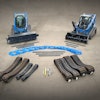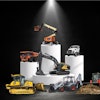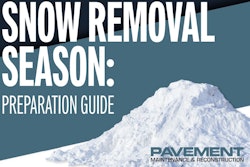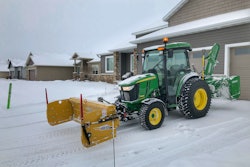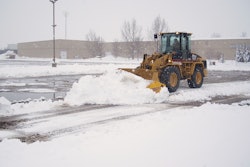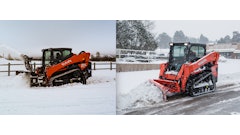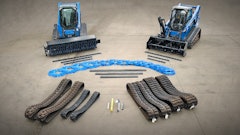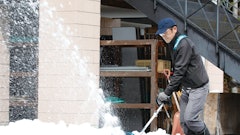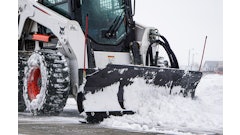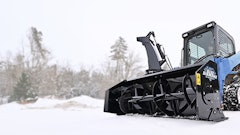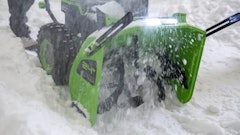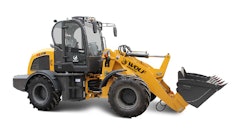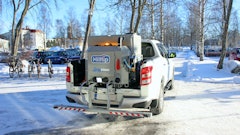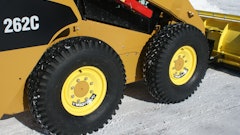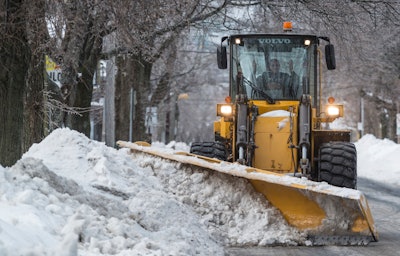
This article was originally published by the Snow and Ice Management Association (SIMA)
Snow hauling and relocation is a highly choreographed exercise with many moving parts. Truck drivers, loader operators, site foremen, dump supervisors and even the general public add up to a lot of people and heavy equipment to look out for during a snow event. To ensure the safety of all, consider the following:
Can you be seen?
MPS Property Services President Jim Monk, CSP, says inspecting workers’ personal protective equipment is part of the company’s safety check before beginning operations. “We make sure that the operators and drivers have proper gear, including high-visibility vests. We carry extras so if a subcontractor doesn’t have one we can lend him one.”
Evaluate the site
Whether relocating on site or hauling to a dump, it’s important to evaluate the work area before beginning. Neal Glatt, CSP, account executive for Case Snow Management, says: “Snow piles, traffic, etc. change quickly. It’s important to re-evaluate the area each storm. First and foremost, a working area needs to be defined. Determine what snow piles are going to be moved, how trucks will be routed to the pile, and where the loader will be workings.”
Monk says site evaluation is part of their pre-op site evaluation. “We identify any issues like tree limbs, overhead wires, roof extensions, low visibility areas etc.”
Minimize public access
Dean Outhouse, CSP, president of Crescent Snow Operations, says ideally all hauling/stacking activity will take place at night when the public is not around. When that’s not possible, it’s important to keep them away from activity and alert them to the fact that hazardous conditions are present.
Monk agrees, “We discuss potential vehicular and pedestrian problems and cordon off our work area if necessary. Sometimes mobile signboards are necessary to temporarily divert traffic.”
Glatt advises that all trucks and loaders should have flashing hazard lights and backup alarms, and the site should be well-lit. “If the lights aren’t already on, ask the property manager to turn them on.” He says that despite the company’s best efforts, some sites just can’t be “people proofed.” When that is the case, both Glatt and Monk encourage using spotters to help manage traffic.
“If we can’t shut a site down for the night, or if working in a really tight area, we may designate someone for traffic control. We’ve had upwards of 25 trucks being loaded by multiple machines on one location before and sometimes removal is done around customer vehicles or even pedestrians, so having someone on the ground to monitor conditions, guide drivers, and protect the public is crucial in those circumstances.”
Keep operators safe
For Outhouse, his suggestion for keeping his team safe is simple: “No one ever gets out of the dump truck and no one gets out of the loaders. When you get out is when something can happen. We also establish communication protocol before operations start.”
Public sites, where there are multiple companies coming and going, can be concern for accidents, Glatt says. “Dump sites for snow aren’t typically the best maintained, so getting stuck can be a concern as well as having enough space to turn around. Sometime a bunch of trucks are trying to dump in the same pile and you get a major bottleneck or an accident if guys aren’t careful.”
Monk says common sense should prevail: “Drivers usually just have to exhibit good judgment. We make sure that none of the operators or truck drivers have been working excessively long hours leading up to the relocation.”
On the road
Prevent overloading the dump trucks and ensure tarps are secured if required.
“Weight typically doesn’t become much of an issue because snow isn’t very dense, but large ice blocks can still damage trucks and equipment. Make sure that the load is stable helps prevent broken windshields from the ice falling back out of the bucket or dented trailers. I’ve also seen guys overload trucks to the point that snow “boulders” fall off over the road, which is a major safety concern. Operators need to be cognizant of how much is too much,” Glatt says.
Know the law
City, state and federal laws govern operations, so it’s important to know the rules that apply to the site you’re working on. For example, Monk says Ontario requires a written plan if the company will impact traffic on a public road. “We make sure this is completed and understood by everyone.”
With regard to dumping Glatt says it’s important to know whether sites need licensed to accept snow given the trash and hazardous materials that might be in the snow.
Between the regulations and all the moving parts, it’s important not to discount the importance of a strong safety plan: “Put it all together, and you have a lot of safety concerns and regulations to deal with.”
Cheryl Higley is editorial director of Snow Business magazine.
Interested in subscribing to SIMA's magazine?

